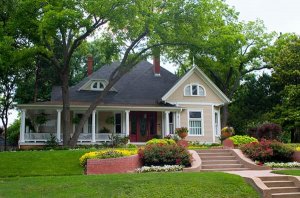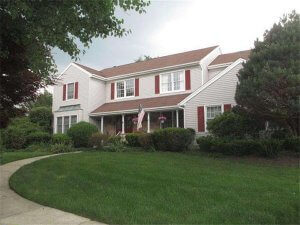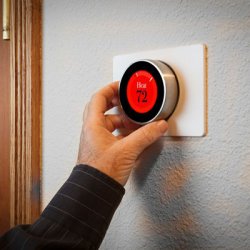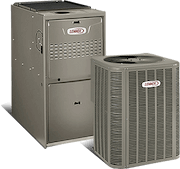Changes to your yard and landscaping can have a big impact on energy efficiency both inside and outside the home.

Most people know that landscaping choices can affect your water use, but did you know that a few strategic landscaping choices can improve your HVAC efficiency as well? There are a few ways to improve your HVAC efficiency with changes to your yard, and you will be surprised how much of a difference they can make.
In fact, neighborhoods with a lot of trees are often measurably cooler than areas with no trees. A bit of simple shade can go a long way! The same applies to your yard. By understanding how the sun and your local climate can affect how your house is heated and cooled, you can improve your HVAC efficiency with a few landscaping changes. This will keep your heating & air conditioning systems running longer, and running well.
How Shade Improves HVAC Efficiency
The key to a yard that promotes HVAC efficiency is a well arranged shade pattern. For the St. Louis area, you should focus on shading the southern and western walls of your home in the summer, when the sun shines strongest from this direction. In the winter, shade is less important as you want to allow winter sun to warm your house. That means you can use deciduous trees and seasonal shrubs to create shade in the summer without blocking the sun in the winter as well, allowing you to improve your winter HVAC efficiency too.
Summer Tips for HVAC Efficiency
In the summer, you will want to have trees with wide and high limbs that can provide shade to your roof. It is best to plant these on the south side of the house, where they will provide shade without blocking cooling breezes. You can also place trees to cover heat-reflecting surfaces like driveways, or to cover areas of the house that are more vulnerable to heat — like large windows or open areas. The more shade you can get in the summer, the better HVAC efficiency you will see.
Winter Tips for HVAC Efficiency

In the winter, the trees can still help improve your HVAC efficiency. In addition to the ambient temperature, cold gusts and sustained wind can really bring down the temperature of your home. That means your furnace is working harder than necessary thanks to these cold bursts. A windbreak can help. Windbreaks are objects like trees, shrubs, or structures that block the wind.
We recommend deciduous trees because they will not cause shade in the winter, giving you the perfect combination of a winter windbreaker and a summer shade provider. You can also use shrubs to create coverage where a tree may not be feasible. Finally, a trellis or other structure with vines can also provide shade and protection, but it might be a bit harder to maintain, and trees have the advantage of providing shade to your roof as well.
Learn More About Landscaping for HVAC Efficiency
All in all, there is a lot you can do to improve your HVAC efficiency with strategic landscaping decisions. For more on HVAC efficiency and how to keep your heating & air conditioning systems working well and running at peak efficiency, get in touch with Galmiche & Sons today. From every day maintenance to tips like these, our expert team can help you get the most from your St. Louis HVAC system.









